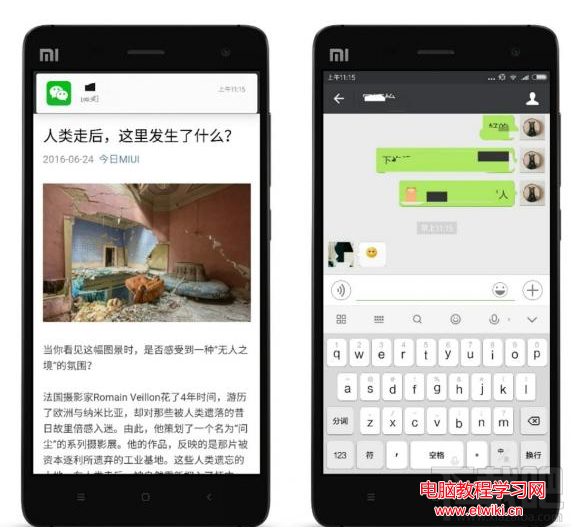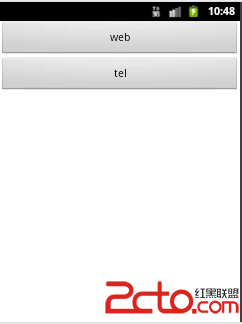編輯:關於Android編程
在學習"Android異步加載圖像小結"這篇文章時, 發現有些地方沒寫清楚,我就根據我的理解,把這篇文章的代碼重寫整理了一遍,下面就是我的整理。
原創整理不易,轉載請注明出處:Android異步加載圖片中UI是否被阻塞的測試
代碼下載地址:http://www.zuidaima.com/share/1724477350611968.htm
01
"1.0" encoding="utf-8"?>
02
"http://schemas.android.com/apk/res/android"
03
android:orientation="vertical" android:layout_width="fill_parent"
04
android:layout_height="fill_parent">
05
"圖片區域開始" android:id="@+id/textView2"
06
android:layout_width="wrap_content" android:layout_height="wrap_content">07
"@+id/imageView1"
08
android:layout_height="wrap_content" android:src="@drawable/icon"
09
android:layout_width="wrap_content">10
"@+id/imageView2"
11
android:layout_height="wrap_content" android:src="@drawable/icon"
12
android:layout_width="wrap_content">13
"@+id/imageView3"
14
android:layout_height="wrap_content" android:src="@drawable/icon"
15
android:layout_width="wrap_content">16
"@+id/imageView4"
17
android:layout_height="wrap_content" android:src="@drawable/icon"
18
android:layout_width="wrap_content">19
"@+id/imageView5"
20
android:layout_height="wrap_content" android:src="@drawable/icon"
21
android:layout_width="wrap_content">22
"圖片區域結束" android:id="@+id/textView1"
23
android:layout_width="wrap_content" android:layout_height="wrap_content">24
我們將演示的邏輯是異步從服務器上下載5張不同圖片,依次放入這5個ImageView。上下2個TextView 是為了方便我們看是否阻塞了UI的顯示。
當然 AndroidManifest.xml 文件中要配置好網絡訪問權限。
1
"android.permission.INTERNET">Handler+Runnable模式
我們先看一個並不是異步線程加載的例子,使用 Handler+Runnable模式。
這裡為何不是新開線程的原因請參看這篇文章:Android Runnable 運行在那個線程 這裡的代碼其實是在UI 主線程中下載圖片的,而不是新開線程。
我們運行下面代碼時,會發現他其實是阻塞了整個界面的顯示,需要所有圖片都加載完成後,才能顯示界面。
01
package com.zuidaima.AndroidTest;
02
03
import java.io.IOException;
04
import java.net.URL; import android.app.Activity;
05
import android.graphics.drawable.Drawable;
06
import android.os.Bundle;
07
import android.os.Handler; import android.os.SystemClock;
08
import android.util.Log;
09
import android.widget.ImageView;
10
11
public class MainActivity extends Activity
{
12
@Override
13
public void onCreate(Bundle
savedInstanceState) {
14
super.onCreate(savedInstanceState);
15
setContentView(R.layout.main);
16
loadImage("http://www.baidu.com/img/baidu_logo.gif",
R.id.imageView1);
17
loadImage(http://www.chinatelecom.com.cn/images/logo_new.gif",
18
R.id.imageView2);
19
loadImage("http://cache.soso.com/30d/img/web/logo.gif,
R.id.imageView3);
20
loadImage("http://csdnimg.cn/www/images/csdnindex_logo.gif",
21
R.id.imageView4);
22
loadImage("http://images.cnblogs.com/logo_small.gif",
23
R.id.imageView5);
24
}
25
26
private Handler
handler=new Handler();
27
28
private void loadImage(final String
url, final int id)
{
29
handler.post(new Runnable()
{
30
public void run()
{
31
Drawable
drawable=null;
32
try {
33
drawable=Drawable.createFromStream(
34
new URL(url).openStream(), "image.gif");
35
} catch (IOException
e) {
36
Log.d("test",
e.getMessage());
37
}
38
if (drawable==null)
{
39
Log.d("test", "null
drawable");
40
} else {
41
Log.d("test", "not
null drawable");
42
}
43
//
為了測試緩存而模擬的網絡延時
44
SystemClock.sleep(2000);
45
46
(ImageView)
MainActivity.this.findViewById(id))
47
.setImageDrawable(drawable);
48
}
49
});
50
}
51
}
Handler+Thread+Message模式
這種模式使用了線程,所以可以看到異步加載的效果。
核心代碼:
01
package com.zuidaima.AndroidTest;
02
03
import java.io.IOException;
04
import java.net.URL;
05
import android.app.Activity;
06
import android.graphics.drawable.Drawable;
07
import android.os.Bundle;
08
import android.os.Handler;
09
import android.os.Message;
10
import android.os.SystemClock;
11
import android.util.Log;
12
import android.widget.ImageView;
13
14
public class MainActivity extends Activity
{
15
@Override
16
public void onCreate(Bundle
savedInstanceState) {
17
super.onCreate(savedInstanceState);
18
setContentView(R.layout.main);
19
loadImage2("http://www.baidu.com/img/baidu_logo.gif",
R.id.imageView1);
20
loadImage2("http://www.chinatelecom.com.cn/images/logo_new.gif",
21
R.id.imageView2);
22
loadImage2("http://cache.soso.com/30d/img/web/logo.gif",
R.id.imageView3);
23
loadImage2("http://csdnimg.cn/www/images/csdnindex_logo.gif",
24
R.id.imageView4);
25
loadImage2("http://images.cnblogs.com/logo_small.gif",
26
R.id.imageView5);
27
}
28
29
final Handler
handler2=new Handler()
{
30
@Override
31
public void handleMessage(Message
msg) {
32
((ImageView)
MainActivity.this.findViewById(msg.arg1))
33
.setImageDrawable((Drawable)
msg.obj);
34
}
35
};
36
37
//
采用handler+Thread模式實現多線程異步加載
38
private void loadImage2(final String
url, final int id)
{
39
Thread
thread=new Thread()
{
40
@Override
41
public void run()
{
42
Drawable
drawable=null;
43
try {
44
drawable=Drawable.createFromStream(
45
new URL(url).openStream(), "image.png");
46
} catch (IOException
e) {
47
Log.d("test",
e.getMessage());
48
}
49
50
//
模擬網絡延時
51
SystemClock.sleep(2000);
52
53
Message
message=handler2.obtainMessage();
54
message.arg1=id;
55
message.obj=drawable;
56
handler2.sendMessage(message);
57
}
58
};
59
thread.start();
60
thread=null;
61
}
62
63
}
這時候我們可以看到實現了異步加載, 界面打開時,五個ImageView都是沒有圖的,然後在各自線程下載完後才把圖自動更新上去。
Handler+ExecutorService(線程池)+MessageQueue模式
能開線程的個數畢竟是有限的,我們總不能開很多線程,對於手機更是如此。
這個例子是使用線程池。Android擁有與Java相同的ExecutorService實現,我們就來用它。
線程池的基本思想還是一種對象池的思想,開辟一塊內存空間,裡面存放了眾多(未死亡)的線程,池中線程執行調度由池管理器來處理。當有線程任務時,從池中取一個,執行完成後線程對象歸池,這樣可以避免反復創建線程對象所帶來的性能開銷,節省了系統的資源。
線程池的信息可以參看這篇文章: Java&Android的線程池-ExecutorService
下面的演示例子是創建一個可重用固定線程數的線程池。
核心代碼
01
package com.zuidaima.AndroidTest;
02
03
import java.io.IOException;
04
import java.net.URL;
05
import java.util.concurrent.ExecutorService;
06
import java.util.concurrent.Executors;
07
08
import android.app.Activity;
09
import android.graphics.drawable.Drawable;
10
import android.os.Bundle;
11
import android.os.Handler;
12
import android.os.Message;
13
import android.os.SystemClock;
14
import android.util.Log;
15
import android.widget.ImageView;
16
17
public class MainActivity extends Activity
);
18
19
//
引入線程池來管理多線程
20
private void loadImage3(final String
url, final int id)
{
21
executorService.submit(new Runnable()
{
22
public void run()
{
23
try {
24
final Drawable
drawable=Drawable.createFromStream(
25
new URL(url).openStream(), "image.png");
26
27
//
模擬網絡延時
28
SystemClock.sleep(2000);
29
30
handler.post(new Runnable()
{
31
public void run()
{
32
((ImageView)
MainActivity.this.findViewById(id))
33
.setImageDrawable(drawable);
34
}
35
});
36
} catch (Exception
e) {
37
throw new RuntimeException(e);
38
}
39
}
40
});
41
}
42
}
這裡我們象第一步一樣使用了 handler.post(new Runnable() { 更新前段顯示當然是在UI主線程,我們還有 executorService.submit(new Runnable() { 來確保下載是在線程池的線程中。
Handler+ExecutorService(線程池)+MessageQueue+緩存模式
下面比起前一個做了幾個改造:
把整個代碼封裝在一個類中
為了避免出現同時多次下載同一幅圖的問題,使用了本地緩存 封裝的類:
01
package com.zuidaima.AndroidTest;
02
03
import java.lang.ref.SoftReference;
04
import java.net.URL; import java.util.HashMap;
05
import java.util.Map;
06
import java.util.concurrent.ExecutorService;
07
import java.util.concurrent.Executors;
08
import android.graphics.drawable.Drawable;
09
import android.os.Handler;
10
import android.os.SystemClock;
11
12
public class AsyncImageLoader3
);
13
14
//
固定五個線程來執行任務
15
private final Handler
handler=new Handler();
16
17
/**
*//**
*//***//**
18
*
19
*
@param imageUrl
20
*
圖像url地址
21
*
@param callback
22
*
回調接口
23
*
@return 返回內存中緩存的圖像,第一次加載返回null
24
*/
25
public Drawable
loadDrawable(final String
imageUrl,
26
final ImageCallback
callback) {
27
28
//
如果緩存過就從緩存中取出數據
29
if (imageCache.containsKey(imageUrl))
{
30
SoftReference
softReference=imageCache.get(imageUrl);
31
if (softReference.get()
!=null)
{
32
return softReference.get();
33
}
34
}
35
//
緩存中沒有圖像,則從網絡上取出數據,並將取出的數據緩存到內存中
36
executorService.submit(new Runnable()
{
37
public void run()
{
38
try {
39
final Drawable
drawable=loadImageFromUrl(imageUrl);
40
41
imageCache.put(imageUrl, new SoftReference(
42
drawable));
43
44
handler.post(new Runnable()
{
45
public void run()
{
46
callback.imageLoaded(drawable);
47
}
48
});
49
} catch (Exception
e) {
50
throw new RuntimeException(e);
51
}
52
}
53
});
54
return null;
55
}
56
57
//
從網絡上取數據方法
58
protected Drawable
loadImageFromUrl(String imageUrl) {
59
try {
60
61
//
測試時,模擬網絡延時,實際時這行代碼不能有
62
SystemClock.sleep(2000);
63
64
return Drawable.createFromStream(new URL(imageUrl).openStream(),
65
"image.png");
66
67
} catch (Exception
e) {
68
throw new RuntimeException(e);
69
}
70
}
71
72
//
對外界開放的回調接口
73
public interface ImageCallback
{
74
75
//
注意 此方法是用來設置目標對象的圖像資源
76
public void imageLoaded(Drawable
imageDrawable);
77
}
78
}
說明:
final參數是指當函數參數為final類型時,你可以讀取使用該參數,但是無法改變該參數的值。
參看:Java關鍵字final、static使用總結
這裡使用SoftReference 是為了解決內存不足的錯誤(OutOfMemoryError)的,更詳細的可以參看:
內存優化的兩個類:SoftReference 和 WeakReference
前端調用:
01
package com.zuidaima.AndroidTest;
02
03
import android.app.Activity;
04
import android.graphics.drawable.Drawable;
05
import android.os.Bundle;
06
import android.widget.ImageView;
07
08
public class MainActivity extends Activity
{
09
@Override
10
public void onCreate(Bundle
savedInstanceState) {
11
super.onCreate(savedInstanceState);
12
setContentView(R.layout.main);
13
loadImage4("http://www.baidu.com/img/baidu_logo.gif",
R.id.imageView1);
14
loadImage4("http://www.chinatelecom.com.cn/images/logo_new.gif",
15
R.id.imageView2);
16
loadImage4("http://cache.soso.com/30d/img/web/logo.gif",
17
R.id.imageView3);
18
loadImage4("http://csdnimg.cn/www/images/csdnindex_logo.gif",
19
R.id.imageView4);
20
loadImage4("http://images.cnblogs.com/logo_small.gif",
21
R.id.imageView5);
22
}
23
24
private AsyncImageLoader3
asyncImageLoader3=new AsyncImageLoader3();
25
26
//
引入線程池,並引入內存緩存功能,並對外部調用封裝了接口,簡化調用過程
27
28
private void loadImage4(final String
url, final int id)
{
29
//
如果緩存過就會從緩存中取出圖像,ImageCallback接口中方法也不會被執行
30
Drawable
cacheImage=asyncImageLoader3.loadDrawable(url,
31
new AsyncImageLoader3.ImageCallback()
{
32
//
請參見實現:如果第一次加載url時下面方法會執行
33
public void imageLoaded(Drawable
imageDrawable) {
34
((ImageView)
findViewById(id))
35
.setImageDrawable(imageDrawable);
36
}
37
});
38
if (cacheImage
!=null)
{
39
((ImageView)
findViewById(id)).setImageDrawable(cacheImage);
40
}
41
}
42
43
}
 Android動態布局入門及NinePatchChunk解密
Android動態布局入門及NinePatchChunk解密
擺脫XML布局文件相信每一個Android開發者,在接觸“Hello World”的時候,就形成了一個觀念:Android UI布局是通過layo
 miui8如何開啟多窗口模式 miui8微信多窗口模式
miui8如何開啟多窗口模式 miui8微信多窗口模式
當我們在移動端閱讀文章時,總會有朋友發了一條微信給你。這時候,我是繼續看文章還是回微信呢?MIUI8的微信多窗口功能讓你徹底擺脫這個煩惱,多窗口模式能夠讓你
 第十四章,通過Intent打開其他軟件(Android)
第十四章,通過Intent打開其他軟件(Android)
activity_main.xml MainActivity.java package com.example.demo0623;impo
 android中AutoCompleteTextView的簡單用法(實現搜索歷史)
android中AutoCompleteTextView的簡單用法(實現搜索歷史)
網上有不少教程,那個提示框字符集都是事先寫好的,例如用一個String[] 數組去包含了這些數據,但是,我們也可以吧用戶輸入的作為歷史記錄保存下面先上我寫的代碼: imp